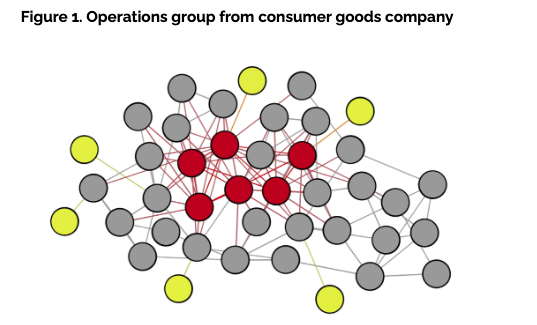
by admin | Nov 17, 2025 | Human Resources
 An employee handbook is key for setting workplace expectations and staying compliant. Outdated policies can create legal and operational risk. With evolving compliance requirements in the form of new laws and revised regulations, employers need to keep a watchful eye on their handbook policies to make sure they stay compliant. They should also be sure that the “oldies but goodies” – like harassment prevention and conduct guidelines are up to snuff. If you pulled a template for one of these off the internet in 2007, it’s almost guaranteed to need a refresh.
An employee handbook is key for setting workplace expectations and staying compliant. Outdated policies can create legal and operational risk. With evolving compliance requirements in the form of new laws and revised regulations, employers need to keep a watchful eye on their handbook policies to make sure they stay compliant. They should also be sure that the “oldies but goodies” – like harassment prevention and conduct guidelines are up to snuff. If you pulled a template for one of these off the internet in 2007, it’s almost guaranteed to need a refresh.
Using outdated policies can lead to confusion, operational disorder,and potential legal exposure. Here are some key end-of-year activities to make sure you start the new year off right: year:
1. Keep Up with State Leave Laws
State leave laws of all kinds have been trending for years now from paid family leave, to bereavement, to sick and safe leave. If you haven’t had expert help with your handbook policies, there’s a good chance you’re missing key details. For instance:
- California requires accrued paid sick leave with specific accrual caps and revises its law at least some part of that law on an almost yearly basis.
- Many states, including Massachusetts, New York, New Jersey, Washington, and Illinois have paid family and medical leave programs that offer job protection
- Colorado (and a handful of other states) have expanded their paid sick leave to cover public health emergencies
Why it matters: Multi-state employers face a patchwork of rules. Ignoring them can result in fines, penalties, and disputes.
Action for Employers: Audit leave policies against the laws and rules in each state and locality where you have employees. Clearly outline eligibility, accrual, carryover, duration, and payout provisions to avoid disputes.
2. If Your Discrimination, Harassment, and Complaint Policies Feel Outdated, They Probably Are
Your employee handbook should create a safe and inclusive workplace. But many organizations are still relying on policies written years ago that don’t reflect current laws or best practices.
Common gaps include:
- Outdated lists of protected classes that omit new state or federal protections.
- Limited examples of unacceptable behavior.
- Insufficient or unclear complaint procedures.
- Not having specific language or contact information required by state law.
Action for Employers: Refresh anti-harassment, discrimination, and complaint policies to include any and all information required by state law, clear reporting procedures, and protections against retaliation. Pair handbook policies with mandatory training to reinforce expectations.
3. Review Your Workplace Conduct and Social Media Policies
Although employers have a lot of latitude to dictate employee behavior, the National Labor Relations Act does create some limits, several of which you might find surprising. (If you don’t have union activity, you might be surprised to find that this law applies to you at all!) For instance, you can’t prevent employees from complaining about their working conditions or discussing their wages.
Things to check for in your written and unwritten policies:
- Prohibiting Wage Conversations: Even a word-of-mouth rule against wage discussions is problematic. Make sure your managers understand this and that rules again such discussions haven’t found their way into offer letters or handbooks.
- Rules Against Speaking Up or Having a “Bad Attitude”: Rules like this can crop up in many places, including your policy that covers standards of conduct. While you can certainly try to enforce decorum and respectful behavior in the workplace, the devil is in the details, and you need to be careful about over-restricting employee behavior.
- Social Media Limitations: You can certainly restrict social media use during work hours, but generally you can’t stop employees from discussing their employment conditions online (e.g., wages, hours, safety issues, bad management). Unfortunately for employers, there’s a lot of nuance in this area of law.
Action for Employers: Make sure your handbooks policies–and even unwritten practices–don’t run afoul of the National Labor Relations Act.
4. Ensure Handbook Distribution and Acknowledgment
A great handbook is only effective if employees receive it, read it, and acknowledge it. Too often, employers update policies but fail to track distribution or obtain acknowledgments, leaving them unprotected in a dispute.
Best practices include:
- Communicating changes clearly to avoid misunderstandings. If you’ve made big changes to your handbook, point those out when distributing new copies.
- Requiring signed acknowledgment forms or e-signatures from every employee.
- Storing acknowledgments in a secure and easily accessible format.
- If distributing updated handbooks digitally, also have a print version available in an easily accessible location in the workplace.
Action for Employers: Make handbook acknowledgment part of your compliance checklist every year. Ensure everyone receives important updates promptly.
Why Updating Your Employee Handbook Before 2026 Matters
Updating your employee handbook is not just about avoiding penalties. It helps create a compliant, transparent, and inclusive workplace that builds trust and engagement. Employers with up-to-date handbooks will enter 2026 ready to adapt to new laws, strengthen employee relationships, and reduce compliance risk.
By Brian Costello
Originally posted on Mineral

by admin | Sep 22, 2025 | Human Resources
 Change management is a necessity in today’s workplace. Digital transformation, hybrid work and automation are forcing people to adapt, learn new things and evolve. HR professionals are uniquely positioned as both architects and ambassadors of change.
Change management is a necessity in today’s workplace. Digital transformation, hybrid work and automation are forcing people to adapt, learn new things and evolve. HR professionals are uniquely positioned as both architects and ambassadors of change.
Discover guidance for navigating these transformations:
1. Assess the preparedness of the workforce
Whenever big change is coming, organizations must determine how ready their people are for it. HR can conduct organizational readiness assessments to figure out what gaps there are in skills, leadership, mindset and even culture. Listening to employees can help HR identify change fatigue and resistance. Aside from talking to employees, HR can conduct pulse surveys or feedback loops to understand how people are feeling. This can be an impetus for relating to one another.
“Let’s just make sure we do our best to understand the change that’s coming and band together and lean on one another and realize that we are still in control,” said Lisa Williams, global operations talent strategy and employee experience director, manufacturing and engineering operations at Dow during the the PEX Network’s All Access: Digital Transformation in HR 2024. “The computers and the technology are not in control. We are in control and we can dictate and determine how we are going to create the culture of our organization.”
2. Define the purpose and value of the change
One of HR’s big to-dos is to help employees and leadership connect the dots. They must align the change initiatives with business goals and then demonstrate how this relates to employee experience priorities. HR might have to take a page out of marketing and come up with personas, so they can prepare messaging that resonates with different segments of the workforce.
3. Involve employees from the start
Create feedback channels for employees to express concerns and ideas. Leverage change champions, those who will get excited about the transformation and bring others along with them. They can help promote adaptation and, in the case of new technology, adoption.
“Don’t discount your champions,” said Lisa Bass, transformation leader at BioReference Laboratories during All Access: Digital Transformation in HR 2025. “I think people sometimes take them for granted. You think, ‘I’ve got this champion. They’re really positive.’ Don’t discount your champions. They can be your biggest supporters and help. Sometimes, when I’ve pushed out certain initiatives and I knew that it was going to be a big change and I knew I needed the organization to get on board, I would tap into my champions and have a separate conversation before the big meeting and get them on board with the change.”
To begin, however, HR can make employees part of the process by asking them what they want and having them co-create solutions whenever possible. At the very least, they should be consulted about the rollout that will directly impact their work.
“The first tactic that I would recommend is to make people part of defining those behaviors that I mentioned. So, they don’t only receive something from above, they become part of that solution. And also they incorporate the fact that they are responsible for solving the problems when they are very small,” said Iván Céspedes, continuous improvement expert at Roche during All Access: OPEX 2024. “They don’t wait until it’s a larger problem to get involved. They are responsible for dealing with smaller problems before they become something larger. I would start there by making them part of those efforts because we really need to incorporate and take advantage of that full potential.”
4. Build skills for the future
For many years, HR veterans have called on each other to create cultures of continuous learning. HR can package a change initiative as an opportunity to broaden horizons. It’s a chance to assess the workforce to determine skills gaps and address them. However, HR must follow up with actual training. Learning and development is an essential building block in transformation projects.
5. Communicate transparently and often
HR leaders are the bridge between employees and leadership. As a result, they must be great communicators, the ones who are explaining the change, why it’s necessary and how to make it happen. They can use multiple channels to deliver consistent and honest updates.
“People need to connect to the strategy,” said Bass. “They need to understand why they are being asked to do something different.”
In their messaging, they should be up front about the uncertainty or questions people have. They should not be hiding anything or trying to sugarcoat the change. Often, in delivery communications, HR forgets to train managers to reinforce what they are saying while keeping their people at the center of the conversation. This could include:
- Equipping people managers with toolkits and talking points.
- Encouraging two-way dialogue within teams.
- Recognizing that how managers show up can make or break the transition.
6. Track key performance indicators (KPIs) and adapt
As HR leaders plan the change management strategy, they must identify the measurements they will use to determine success. Some possibilities include adoption rates, engagement and attrition. Any change requires ongoing conversation. Leaders should monitor what is being said and what is being done and then pivot based on real-time data. While everyone should be laser focused on understanding when things are not working, they must also celebrate quick wins.
7. Make the growth mindset contagious
Change is uncomfortable and always includes setbacks and challenges. Normalizing this feeling and recognizing it goes a long way to win over people. Quickly, however, HR should turn to sharing stories of resilience, especially if they exist across the organization. Most HR leaders have a commitment to the health and wellness of employees. That mindset should extend to change initiatives. They can provide resources for psychological safety to help people stay well and balanced as they confront change, which can mean managing stress, for example.
“To put the term leading with empathy into real language, it’s really leading with your head, heart and guts,” said Susan Jarrell Kushner, VP head of investment bank talent at Deutsche Bank at the All Access: Change Management for Business Transformation 2024. “I think of the head as being very results driven. That’s what we’ve always done pretty well. We’ve always had our north star of where we wanted to go – that’s the head or the brains. When you think about the gut that’s setting clear priorities and being positive about the change, uncertainty and even being able to explain it very well. But then when you get into the heart of it, the heart is really talking about the purpose, the trust, the values.”
Get used to change
HR professionals have a pivotal role in any change management initiative. They are the stewards of transformation. By realistically assessing the needs of the team, communicating clearly and often, tracking KPIs and providing guidance, empathy and training, HR can have an impact on success. Then, the team can embrace change as an opportunity to humanize the workplace and strengthen culture.
By Francesca DiMeglio
Originally posted on HR Exchange Network

by admin | Aug 18, 2025 | Human Resources
 What if employers could capitalize on this current “I quit” mood? If people are leaving jobs for something better, offer something better! Here are some ideas to create an engaged and committed workforce:
What if employers could capitalize on this current “I quit” mood? If people are leaving jobs for something better, offer something better! Here are some ideas to create an engaged and committed workforce:
1. Understand and Be Responsive to Employee Needs, Motivations, and Priorities
A paycheck may be the reason everyone has a job in the first place, but it’s not the only reason people choose to work or decide to work for one employer over another. Your employees stick with you because there’s something in it for them besides the money. The job is useful to them. Knowing why it’s useful enables you to keep employees satisfied and, better yet, make their jobs even more appealing.
2. Prioritize Employee Development
A work environment in which people gain knowledge, learn new skills, and advance in their careers speaks more clearly and loudly than any marketing message can. People like working where they can grow and develop. According to a LinkedIn report, companies “that excel at internal mobility are able to retain employees nearly twice as long as companies that struggle with it.” And a better trained workforce is also a more productive and profitable workforce!
3. Reward Success
In fact, reward anything you want to see more of. Whether large or small, the rewards have to be meaningful. Ideally, figure out what type of reward speaks to each employee. For some, acknowledgment in a company meeting will make their heart sing. For others, receiving a token of your appreciation, such as a coffee gift card, will be more meaningful.
4. Allow for a Healthy Work-Life Balance
Flexibility is a big selling point for employees looking for better balance between work and life. Your employees have other commitments they need to attend to. Some are caring for young children or other family members while navigating daycare and school closures or multiple appointments. Give employees the time to see to those commitments and have a life outside of work, and you’ll get more from them when they’re on the job. Options may include remote or hybrid work, paid time off, flex hours, four-day workweeks, alternative schedules, and reducing workload. Remember, however, that policies are only as good as the practices around them. Ensure that employees don’t need to jump through hoops to request time off. Remind managers to be responsive to requests for time off and on the look out for signs that employees are feeling overwhelmed.
5. Conduct “Stay Interviews”
Don’t wait until people are leaving to investigate what could have inclined them to stay. Talk to employees now about what’s going well, what pain points they’re experiencing, and what could be done to take the relationship to the next level. Stay interviews enable you to address problems and unfulfilled wishes before they drive people out the door.
By Lisa DeShantz-Cook
Originally posted on Mineral

by admin | Jul 23, 2025 | Human Resources
 When considering employee retention, HR professionals must realize that turnover doesn’t begin with a resignation letter. It starts much earlier—and it’s quieter. A skipped lunch, a missed meeting, fewer Slack messages. These small signs often signal something much bigger: an employee pulling away. Long before someone quits, they disconnect. And in today’s networked workplace, social withdrawal is often the first—and most reliable—indicator that someone’s already halfway out the door.
When considering employee retention, HR professionals must realize that turnover doesn’t begin with a resignation letter. It starts much earlier—and it’s quieter. A skipped lunch, a missed meeting, fewer Slack messages. These small signs often signal something much bigger: an employee pulling away. Long before someone quits, they disconnect. And in today’s networked workplace, social withdrawal is often the first—and most reliable—indicator that someone’s already halfway out the door.
While voluntary turnover has dropped to 13.5 percent—a sharp decline from 24.7 percent in 2022—that doesn’t mean employees are engaged. According to Gallup, more than half of U.S. workers are either actively searching or watching for new jobs. One in three say they’re ready to quit—even without something else lined up. This isn’t just dissatisfaction. It’s detachment. And it’s quietly reshaping our workforce.
Gallup calls this the “Great Detachment.” Employees are still showing up—but they’ve stopped buying in. They’re physically present, but relationally and emotionally checked out. And if left unchecked, this detachment becomes the precursor to departure.
Employee retention: Why people leave before they leave
Network analysis has consistently identified one of the most powerful—and overlooked—predictors of employee turnover: social isolation. While compensation, career mobility, and flexibility certainly matter, they rarely tell the whole story. People don’t just leave because of what they’re missing in their role. They leave because of what they’re missing in their relationships. When employees feel disconnected from their peers, excluded from informal conversations, or cut off from trusted collaborators, a sense of belonging erodes. And once that sense of belonging fades, disengagement—and eventual departure—often follows.
Employees on the edge of the network—those with limited connections—are two to three times more likely to quit. Without strong ties, they’re often left out of critical conversations, informal support, and growth opportunities. In fact, disengagement typically begins at the edges, long before it shows up anywhere else.
But a new pattern is emerging inside organizations: some employees aren’t just stuck on the edges—they’re choosing to move there. They’re intentionally stepping back from collaboration, reducing their interactions, and moving to the periphery of the network by design rather than by default.
Just consider the organization below, it represents an operations group of just over 40 employees within a global consumer goods company, a network analysis revealed a disturbing trend. Six employees—represented in yellow nodes (Figure 1)—were only connected to one other colleague. Several more had just two connections. And while that level of isolation is concerning on its own, what made it worse was that nearly half of these individuals were previously well-connected just a year earlier. They hadn’t just become isolated. They had chosen to pull back.

A recent study from Thred provided even more compelling evidence: employees who had recently resigned had 36 percent fewer connections than the company average. Even more telling, they were twice as likely to report having no meaningful friendship relationships at work. These findings point to a deeper insight—relational connectedness is more than a cultural asset; it’s a predictive signal. Building strong interpersonal ties may be one of the most underutilized levers in improving employee retention.
The contagious nature of the center
Research has long shown that employees at the center of an organizational network—those with many active connections—are 24 percent less likely to leave. These individuals, much like the red nodes in Figure 1, are deeply embedded and often serve as the glue that holds teams together. Their centrality provides access to information, influence and support.
And when those connections go beyond the professional—when they include genuine friendships—their likelihood of staying increases even more. Research has found that employees engaged in dual-purpose relationships—blending both professional collaboration and personal rapport—were 37 percent less likely to quit than those with purely transactional ties. When relationships go beyond the task at hand, people are more likely to stay—not just for the work, but for the sense of shared connection.
But here’s where it gets more complex. When well-connected, central employees become burned out, disengaged or disillusioned with the organization’s direction, their influence can shift from stabilizing to destabilizing. According to Thred’s research, when a central employee leaves, as much as 25 percent of their immediate network is likely to follow within months. These aren’t isolated exits—they’re relational chain reactions.
In highly collaborative environments, the ripple effect of a single departure can quickly cascade across a team. Employees who leave often hold more than just a role—they serve as connectors, mentors and informal leaders whose influence stretches far beyond their job title. When they exit, it disrupts not only workflows but the underlying trust networks that hold teams together. Like a contagion, quitting spreads through connection: the closer someone is to a departing colleague, the more likely they are to re-evaluate their own sense of belonging, purpose, and place within the organization.
The effect can cascade across teams, departments and even geographies—especially in highly collaborative organizations. Like a virus, quitting spreads through proximity. The closer you are to someone who leaves, the more likely you are to consider it too.
What HR can—and should—do
For HR leaders, the implications are clear: employee connection is no longer a soft metric. It’s a strategic one. The good news? Relationships are something organizations can influence—with intention.
Here are four high-impact ways to foster friendship—and reduce attrition:
1. Use network analysis to spot flight risk early
Conduct regular organizational network analysis to identify employees with few or declining connections. These individuals are not just disengaged—they’re already on their way out. Early detection can inform re-engagement strategies or personalized outreach. And if you can’t run an analysis, just watch. Notice who is leaning back more often than they used to.
2. Facilitate moments of connection
Friendship doesn’t form by accident—especially in hybrid or remote settings. Use tools like interest-based matching (for example, Thred’s Stitches) to facilitate meaningful one-to-one meetups. Host curated mixers, team swaps or mentorship pairings that prioritize human connection, not just transactional interactions.
3. Support relationship-rich teams
Encourage cross-functional initiatives where both personal rapport and professional trust can develop. Invest in psychologically safe team cultures that allow for vulnerability, shared experience and the blending of professional and personal interest.
4. Routinely pulse check with central employees
Central employees with high trust capital have the greatest influence on the network. If they’re thriving, they’ll lift others with them. But if they’re frustrated or burned out, their exit could trigger a talent drain. Keep these employees close—and engaged.
By Michael Arena
Originally posted on HR Exchange Network

by admin | Jun 24, 2025 | Human Resources
 Almost one-third of businesses or 31 percent are planning to invest in business intelligence and data analytics in the next 12 months, according to PEX Report 2024-25. Business intelligence dashboards are used by almost two-thirds of organizations with data visualization and process intelligence coming second and third respectively.
Almost one-third of businesses or 31 percent are planning to invest in business intelligence and data analytics in the next 12 months, according to PEX Report 2024-25. Business intelligence dashboards are used by almost two-thirds of organizations with data visualization and process intelligence coming second and third respectively.
“OPEX and transformative growth hinges on the strategic use of advanced data analytics and business intelligence,” Madhu Kittur, industry analyst, told PEX Network.
Clearly, data is a big deal nowadays. As HR Exchange Network prepares for the All Access: Digital Transformation in HR webinar series, data becomes one of the words in the word cloud. People analytics is necessary storytelling and allows HR leaders to validate their seat at the C-suite table. It provides a way to explain decisions and make informed decisions. With advanced technology helping humans more easily gather disparate data and make sense of it, the data becomes currency.
Recently, HR Exchange Network spoke with Michael D. Lieberman People Analytics: Statistical Case Studies for Human Resources (independently published, August 2024), who reminds people that getting down to the basics of data analytics is vital to everyone’s success. Discover his ideas:
HREN: Why should professionals entering HR analytics learn basic statistics?
ML: Statistical literacy is essential for making informed HR decisions. HR analytics tools require a solid foundation in statistics to interpret data effectively. Without understanding the basics, it’s difficult to properly analyze workforce data or make evidence-based decisions about employee programs.
HREN: What techniques are commonly used in HR analytics and why were they chosen?
ML: Many techniques used in HR analytics were adapted from marketing research. The focus should be on desired outcomes rather than specific techniques. Regression analysis and sequence waiting are particularly useful for analyzing employee benefits and performance metrics. The key is selecting methods that answer your specific business questions.
HREN: What advice would you give to beginners in HR analytics to avoid feeling overwhelmed?
ML: Take a step back to understand the question and desired outcome before diving into data. Know what event you’re analyzing and what insights you’re trying to gain. Think of analytics as storytelling with numbers – you’re using data to convey insights that drive decisions.
HREN: How can HR professionals approach changing performance review systems?
ML: Consider testing different types of performance reviews or adding new elements to your existing system. Apply design thinking principles to statistical modeling, making it an iterative process of refining ideas based on feedback and results.
HREN: How is people analytics relevant to the broader business?
ML: Happier employees lead to more profitable businesses. HR analytics helps maximize efficiency by understanding and minimizing costs related to turnover, onboarding, and other HR expenses. This data-driven approach allows HR leaders to make stronger business cases for people-focused initiatives.
HREN: What final advice would you give to HR professionals about analytics?
ML: There’s tremendous momentum in the people analytics industry right now. HR professionals should develop data fluency to make better decisions and communicate more effectively with leadership. Balance soft skills with data literacy – both are necessary for success in modern HR.
By Francesca Di Meglio
Originally posted on HR Exchange Network

by admin | Apr 9, 2025 | Hot Topics, Human Resources
 In an era defined by rapid technological advancement, the nature of leadership is evolving at an unprecedented pace. As artificial intelligence, remote work, and digital communication tools become increasingly integrated into our professional lives, the role of human connection in leadership has never been more crucial. The future of leadership will hinge on the ability to balance technological efficiency with the essential human elements of empathy, communication, and emotional intelligence.
In an era defined by rapid technological advancement, the nature of leadership is evolving at an unprecedented pace. As artificial intelligence, remote work, and digital communication tools become increasingly integrated into our professional lives, the role of human connection in leadership has never been more crucial. The future of leadership will hinge on the ability to balance technological efficiency with the essential human elements of empathy, communication, and emotional intelligence.
The Rise of Digital Leadership
Technology has reshaped the way organizations operate, making leadership more complex and multidimensional. Leaders now manage teams that may be dispersed across different time zones, cultures, and work environments. This shift has necessitated the rise of digital leadership—a model that leverages technology while fostering engagement and collaboration in virtual spaces.
Digital leadership requires adaptability, as traditional face-to-face interactions are increasingly replaced by video calls, instant messaging, and artificial intelligence-driven solutions. However, the challenge lies in maintaining authentic relationships despite physical distance. The leaders of the future must develop new strategies to ensure that employees feel connected, valued, and motivated.
The Importance of Human Connection
Despite technological advancements, the human need for connection remains unchanged. Studies have shown that employees who feel a strong sense of belonging and purpose within their organizations are more engaged, productive, and loyal. Leadership in the digital age must prioritize these elements to create thriving workplaces.
Key aspects of human-centered leadership include:
- Empathy and Emotional Intelligence – Leaders must be able to understand and relate to the emotions of their employees, recognizing the challenges they face and offering support where needed.
- Authentic Communication – Open, honest, and transparent communication builds trust and fosters strong relationships, even in virtual settings.
- Active Listening – Leaders should prioritize listening to their teams, ensuring that diverse perspectives and ideas are heard and valued.
- Well-being and Work-Life Balance – In a world where work and personal life are increasingly intertwined, leaders must advocate for policies that support employee well-being and mental health.
Leveraging Technology to Enhance Connection
Rather than replacing human interaction, technology should serve as a tool to enhance connection. Leaders can leverage digital platforms to create inclusive and collaborative environments. Tools such as virtual reality, artificial intelligence, and data analytics can help leaders personalize engagement, understand team dynamics, and foster meaningful relationships.
Additionally, organizations can implement strategies such as regular virtual check-ins, team-building exercises, and digital mentorship programs to strengthen connections. Investing in digital literacy and training ensures that leaders and employees can effectively navigate the evolving landscape of work.
The Leadership Model of the Future
The future of leadership will be defined by a hybrid approach—one that seamlessly integrates technological innovation with human-centric values. Leaders who prioritize human connection, emotional intelligence, and adaptability will be best positioned to navigate the complexities of a digital world.
As we move forward, organizations must recognize that technology is not a substitute for leadership but rather a tool that, when used wisely, enhances the depth and impact of human relationships. The leaders who succeed in this new era will be those who understand that, despite all the advancements, the core of leadership remains unchanged: people leading people.

 An employee handbook is key for setting workplace expectations and staying compliant. Outdated policies can create legal and operational risk. With evolving compliance requirements in the form of new laws and revised regulations, employers need to keep a watchful eye on their handbook policies to make sure they stay compliant. They should also be sure that the “oldies but goodies” – like harassment prevention and conduct guidelines are up to snuff. If you pulled a template for one of these off the internet in 2007, it’s almost guaranteed to need a refresh.
An employee handbook is key for setting workplace expectations and staying compliant. Outdated policies can create legal and operational risk. With evolving compliance requirements in the form of new laws and revised regulations, employers need to keep a watchful eye on their handbook policies to make sure they stay compliant. They should also be sure that the “oldies but goodies” – like harassment prevention and conduct guidelines are up to snuff. If you pulled a template for one of these off the internet in 2007, it’s almost guaranteed to need a refresh.





